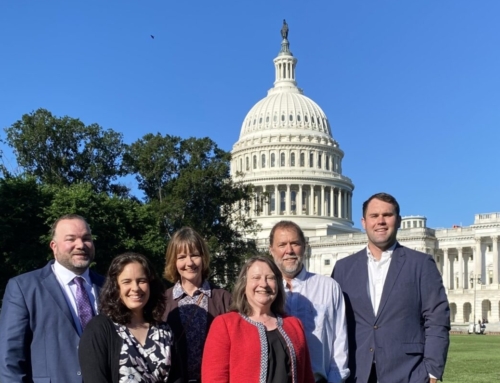
Black Lake Preserve © Randy Keller, ESLT Board of Directors
Follow Highway 120 northwest from Benton and you’ll enter Adobe Valley. There, distant mountain peaks frame wide expanses of fragrant, blooming sagebrush. Native Americans once used this valley as a trading and hunting route, traversing vast fields where wildlife like pronghorn, pygmy rabbits, and more abound. Crowds of Bi-State sage-grouse once gathered here in traditional annual mating dances, on dancing grounds called leks. Waterfowl frequented a string of alkali lakes and wet meadows between the Owens Valley and Mono Lake, many of which still exist today.
This is the landscape that captured Michelle Browner, who fell particularly in love with one place: Black Lake. The lake is one of Adobe Valley’s rare desert wetlands that some call “emerald islands,” a name that captures their breathtaking quality. After many visits to explore the area, Michelle came to feel that she “could not and would not ever want to have the land around Black Lake developed.” When it came up for sale, she purchased Black Lake and donated the property in 2014 to Eastern Sierra Land Trust.
Today, we’re pleased to announce that after three years of careful work, and together with the Natural Resources Conservation Service (NRCS), we’ve permanently protected this oasis in the desert by placing a Wetlands Reserve Easement on our Black Lake Preserve. This means that the property is now restricted from all development, hardscaping, and road building.
Michelle donated this property to ESLT because she knew she could trust us to protect it from development. Although we have owned Black Lake Preserve since 2014, we believe that land is most permanently protected once the development rights are extinguished, something that can be accomplished through tools like conservation easements or Wetlands Reserve Easements. So, not only do we help other landowners place their land under such easements, but we also put our own lands under easements. As a result of this Wetlands Reserve Easement, Michelle’s dream has come true. Black Lake is protected forever and can never be developed by any landowner, even by ESLT.

ESLT’s new wetland reserve easement at Black Lake Preserve ensures that iconic wildlife and migratory birds like American avocet can always find a home at the Preserve. Photo © Nicole Beaulac
This is good for visitors who can forever enjoy the natural beauty of this historic place. And it’s great for all the wildlife that depend on wide sagebrush areas. Many iconic species like pronghorn and Bi-State sage-grouse require vast open areas like Adobe Valley in order for their populations to thrive.
The good news doesn’t end there. In partnership with NRCS, we’ve created a plan to care for Black Lake Preserve in the years to come. The NRCS funding associated with a three-year conservation plan will help us care for native plants, repair fences, and install new pedestrian gates for visitors to easily access the wetlands and lake area.
In past years, dedicated volunteers have helped us care for Black Lake Preserve. We’ve welcomed students like those from Orange Lutheran High School and University of Redlands to the Preserve to help us remove debris and care for habitat there. Members of the Eastern Sierra Audubon Society and our local Bristlecone Chapter of the California Native Plant Society have also volunteered at Black Lake Preserve. Their help has ensured that the Preserve can continue providing safe and healthy homes for wildlife.
We hope it won’t be long until we can invite you back to Black Lake Preserve for future volunteer Stewardship Days! We’ll be sure to notify you on our website and via email and social media as soon as we begin hosting Stewardship Days again.
We also welcome you to visit Black Lake Preserve once it’s safe to travel. Its natural beauty is striking, and it’s teeming with wildlife. Bring your binoculars too—Black Lake is a great place to spot rare feathered visitors to our region. Its wetlands are an important stopover for migratory birds, earning Adobe Valley a designation by Audubon Society as an “Important Bird Area.”
When you’re there, we hope you’ll find peace in the fact that your support for local conservation has helped protect this landscape for generations to come.





